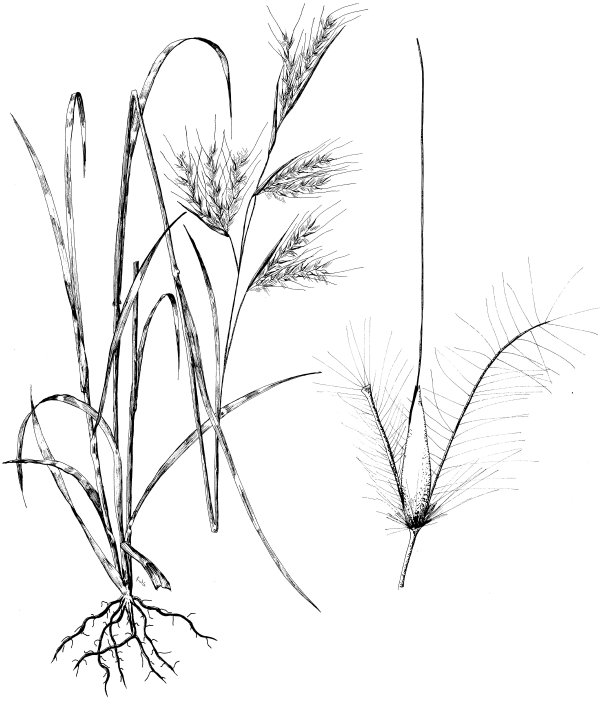
Sorghum halpense (L.) Pers. Johnsongrass
Habit: Perennial from extensive thick creeping scaly rhizomes, or annual by winter killing. Culms: 50-150 cm. tall, simple or branched. Blades: 20-70 cm. long, 5-30 mm. wide, flat, somewhat narrowed towards the rounded base, drooping, margins mostly rough. Sheaths: Usually shorter than the internodes. Ligule: Membranous, ciliate, 2-3 mm. long. Inflorescence: Panicle open, large 15-50 cm. long, oblong to oval, finally exserted, branches verticillate, axils pubescent to villous, the short branchlets with short peduncled racemes, each with 1-few racemes, of a few joints, the spikelets in pairs (or at the ends of the branchlets in three) at each node, one sessile and perfect, awned, the other(s) pedicellate, awnless, usually staminate. Spikelets: Sessile spikelet 4.5-5.5 mm. long, ovate-lanceolate, pale green or yellowish to purplish; pedicellate spikelets 5-7 mm. long, lanceolate, narrower than the sessile one, glabrous to sparingly pubescent, acuminate, usually staminate. Glumes: As long as the spikelet, sparsely or densely pubescent with appressed silky hairs, several nerved, the first broad, flattened dorsally, 3-toothed at the obtuse apex, the margins inrolled, the second not so broad, somewhat keeled. Sterile lemma: Slightly shorter than the glumes, hyaline. Lemmas: Hyaline, about half as long as the spikelet, broadly oval, 2-lobed, pubescent, bearing a readily deciduous awn 8-15 mm. long, spiral below, much exserted, more or less bent. Lemma and palea of pedicellate spikelet shorter and narrower, hyaline. Habitat: Open ground, fields and waste places. July-October. Kansas Range: Scattered throughout. Use: Troublesome because of difficulty of eradication on account of the strong rhizomes. In northern Kansas most winters kill the roots. Remarks: Under certain conditions the leaves produce dhurrin, a cyanogenetic glucoside which may bring about hydrocyanic poisoning in grazing animals. The leaves are often splotched with purple, due to a bacterial disease.